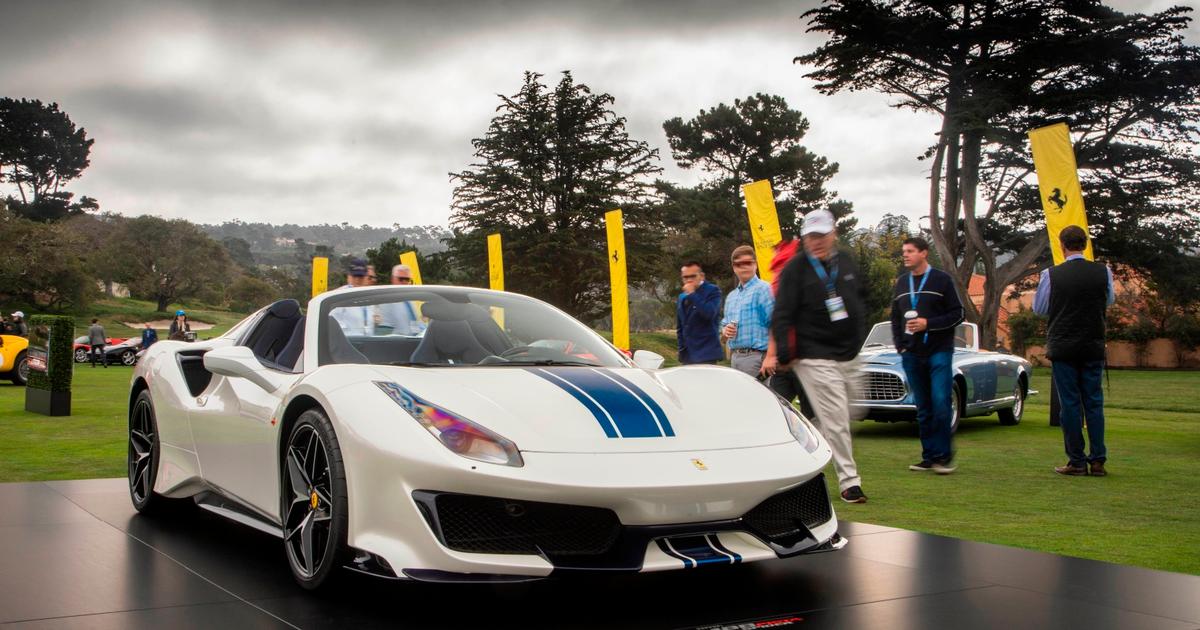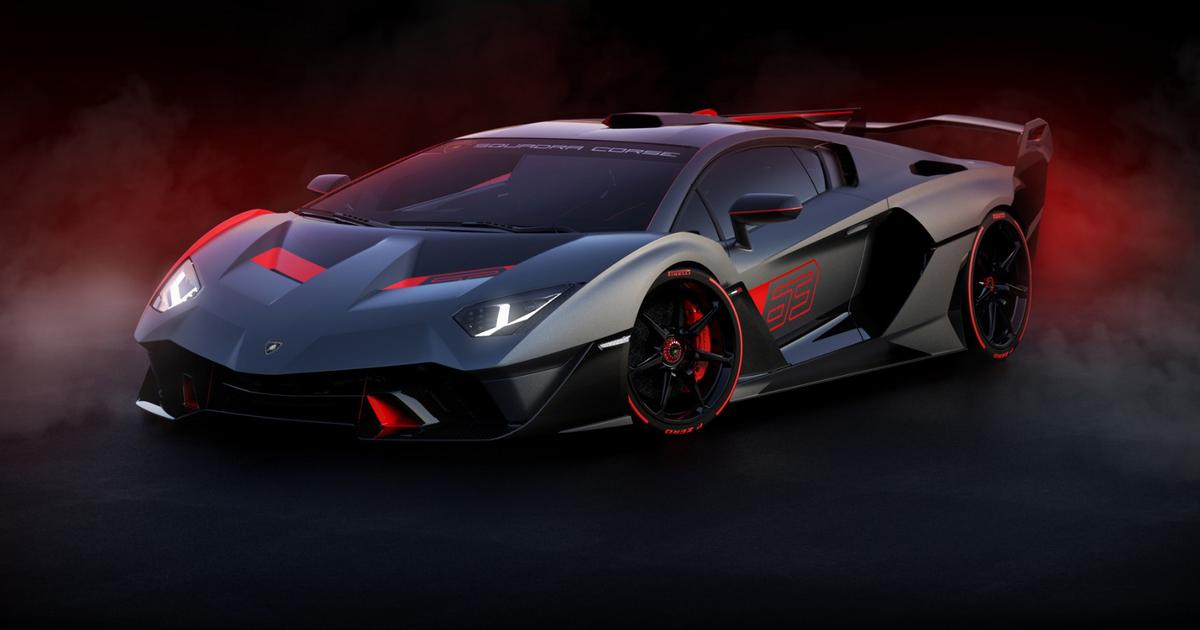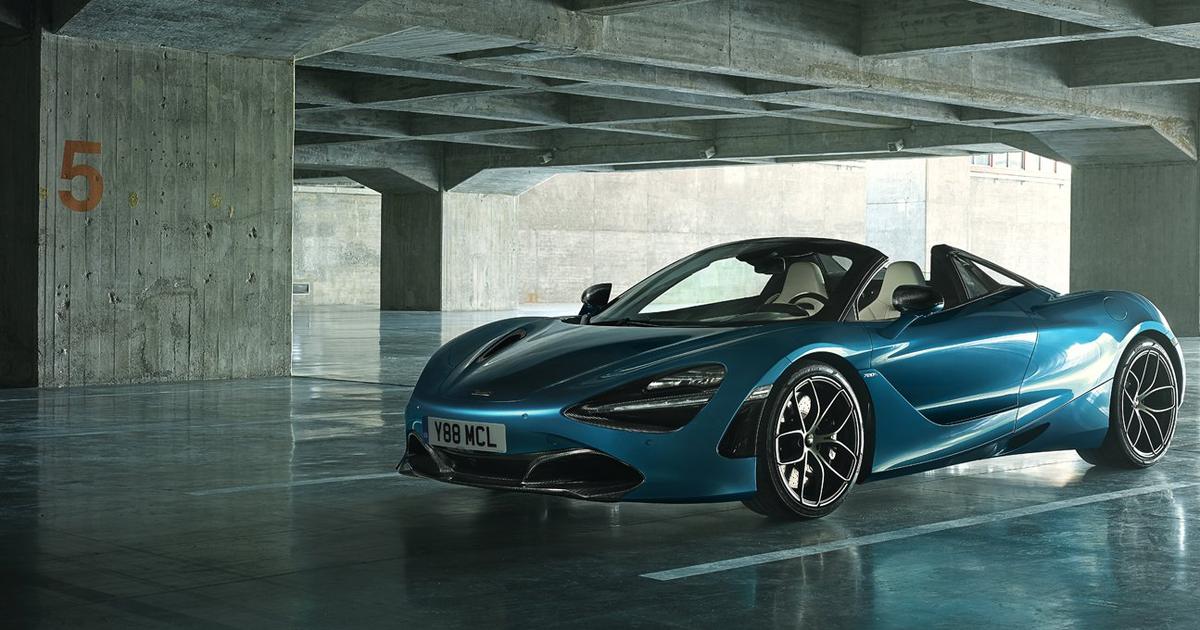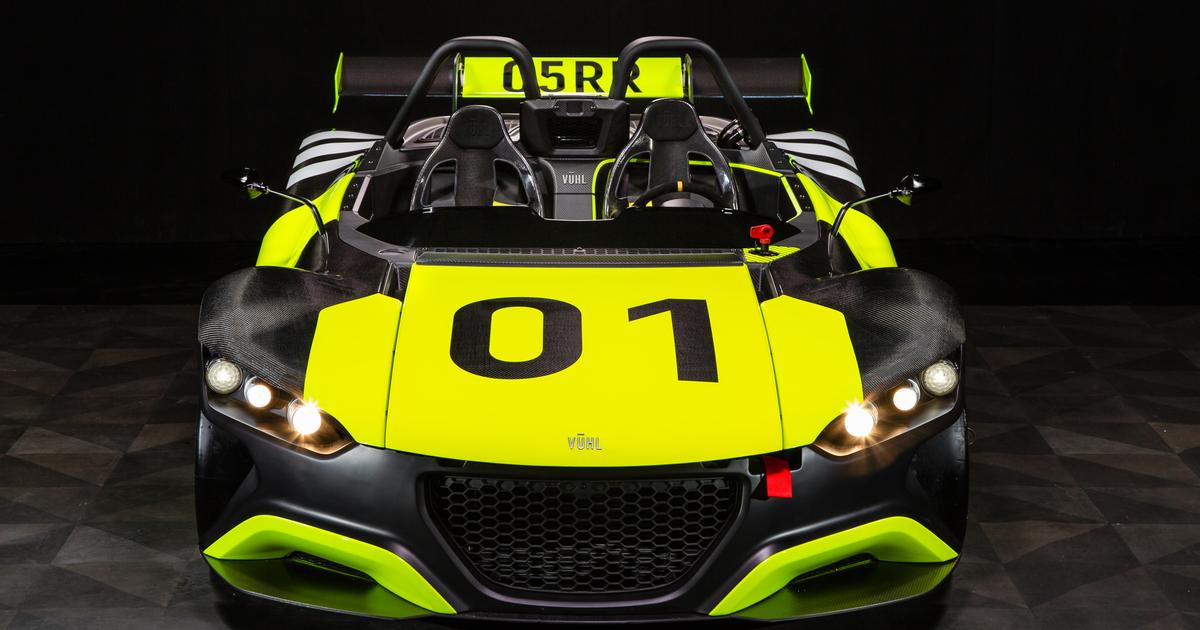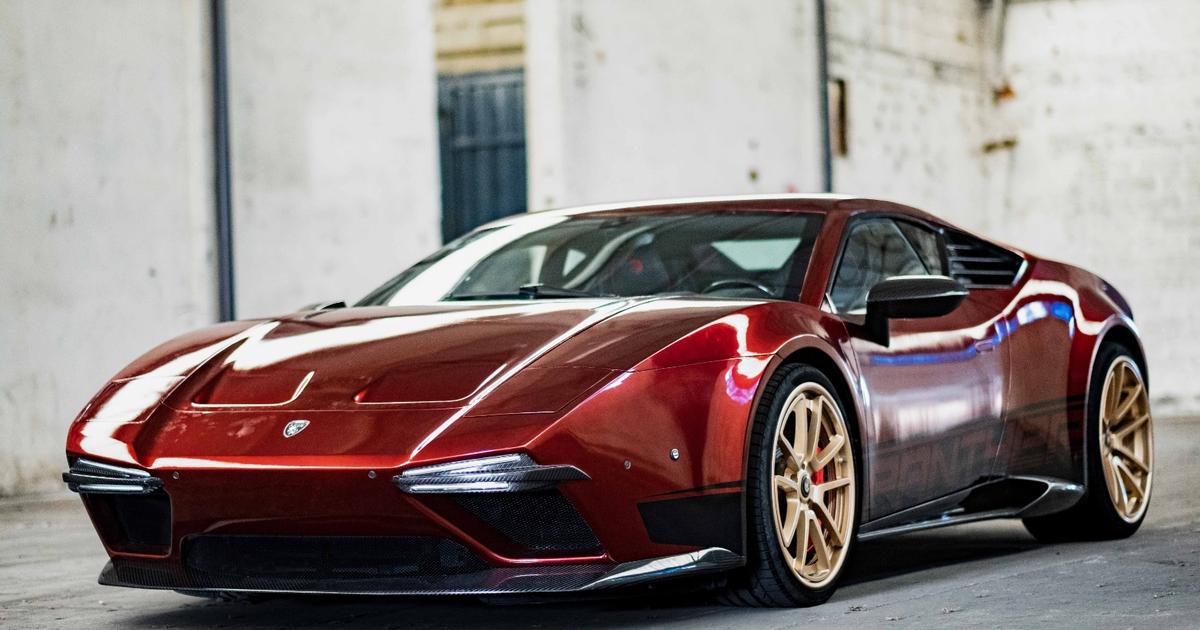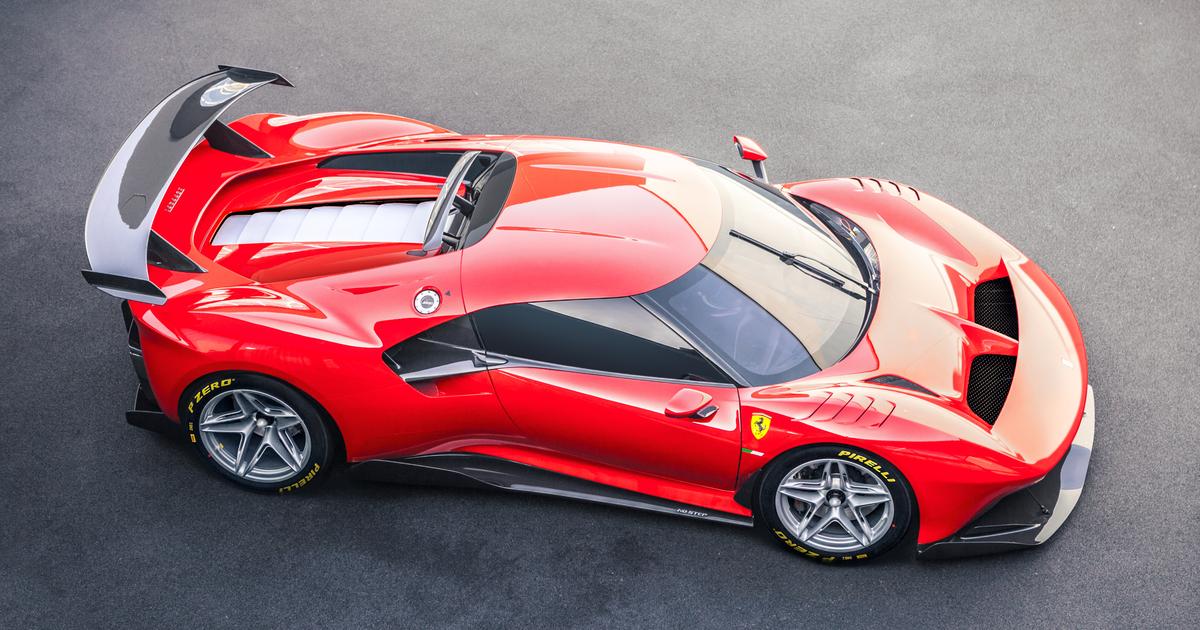Automakers around the world have spent much time looking at futuristic cars that will drive themselves. BMW takes a sharp right turn away from this trend with the all-new Vision M Next concept, exploring what the future of cars will look like for enthusiasts who want to continue wrapping their leather-clad fingers around the steering wheel. The car’s suite of next-generation technologies isn’t there to take over driving, but to connect driver and vehicle toward voraciously devouring the pavement ahead.
In BMW’s future, every driver will face a critical decision: to drive or be driven. Last year’s Vision iNext concept explored what it would be like to be chauffeured by technology, while this year’s M-badged Vision Next takes a look at how tech can improve the experience for those that emphatically choose to keep their feet engaged with the pedals.
To start with, BMW manipulates hybrid technology toward creating a purer driver-focused environment, as well as a cleaner ride. The 591-hp plug-in hybrid powertrain lets the driver select between electric all-wheel-drive and turbocharged four-cylinder rear-wheel drive, perhaps even switching on the fly to enjoy the sporty feel of rear power after sprinting to 62 mph (100 km/h) from standstill in a mere three seconds thanks to the immediate all-wheel torque of the e-drive.
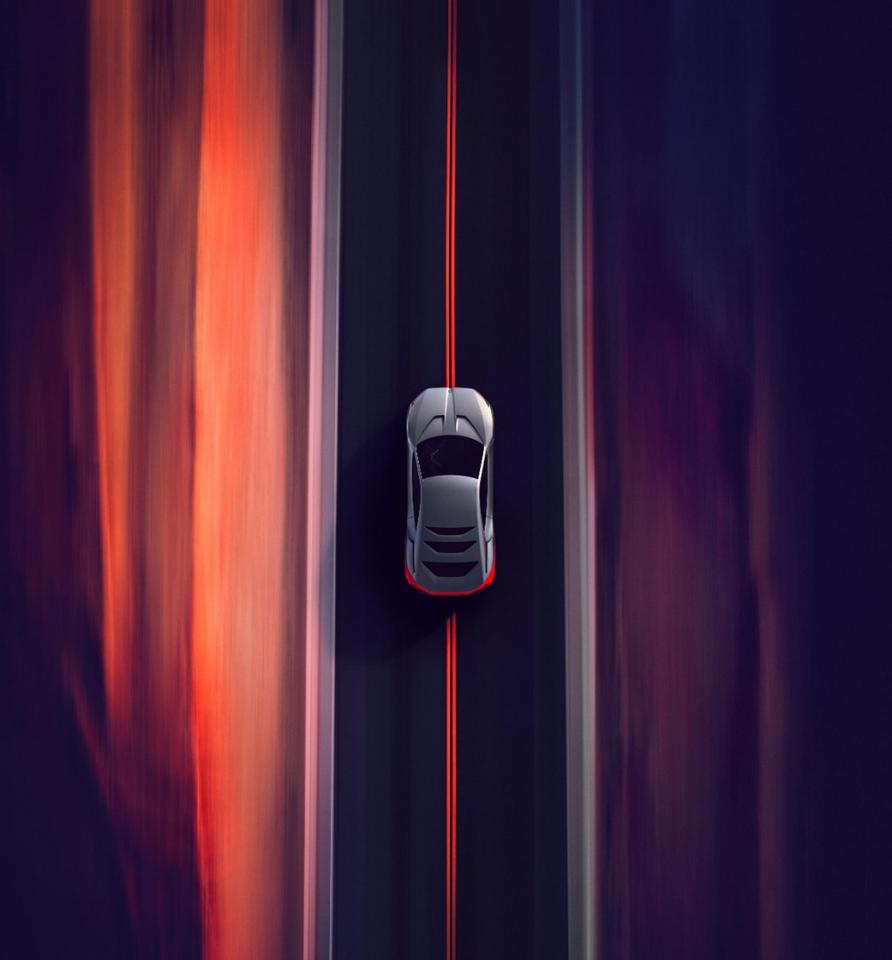
BMW
BMW says the Vision M Next can wander through the city for up to 62 zero-emissions electric miles (100 km) before opening things up to a top speed of 186 mph (300 km/h) on the highway. Boost+ mode delivers an extra burst of power at the push of a button.
Without the need to focus all its next-gen technology on reading and analyzing the surrounding driving environment the way it would with a Level 5 self-driving concept, BMW was free to direct next-generation systems toward assisting the driver and enhancing the overall experience. Autonomous tech is a loyal co-pilot rather than a pilot.
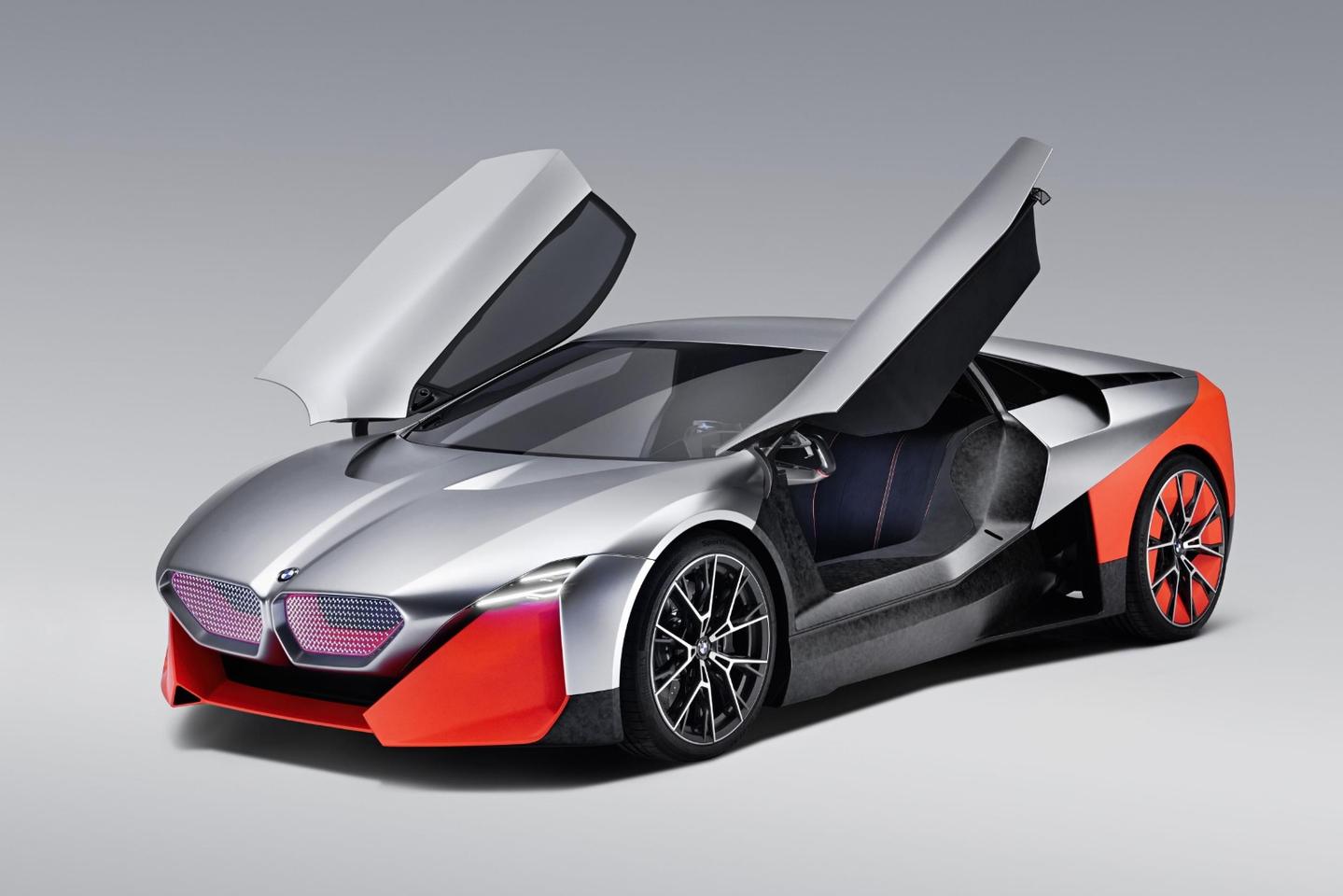
BMW
The process begins before the driver even gets in the car, the Vision M Next’s facial recognition system auto-unlocking the doors. A tap of a touch sensor prompts the butterfly wings to swing open, revealing a minimalist interior focused entirely on seat #1. A hulking monobloc center console separates the driver’s seat into a driver’s nook, and memory foam seats help create a tailored suit-like fit.
The dramatic curvature of the wide, race-inspired steering wheel helps to draw the driver’s attention directly ahead, where the floating curved glass brings gauge information to life. Farther ahead, an augmented reality HUD provides another layer of information directly in front of the driver. BMW refers to its digital informational layout as a Boost Pod, conveying information and control via three layers: the HUD, the curved glass instrument panel and the steering wheel-integrated displays and controls. However, we think the real three tiers are the linear array of road, informational cluster and driver.
In contrast, the dashboard next to the steering wheel is a blank slate, with no controls or visuals to pull the driver’s attention away from the windshield.
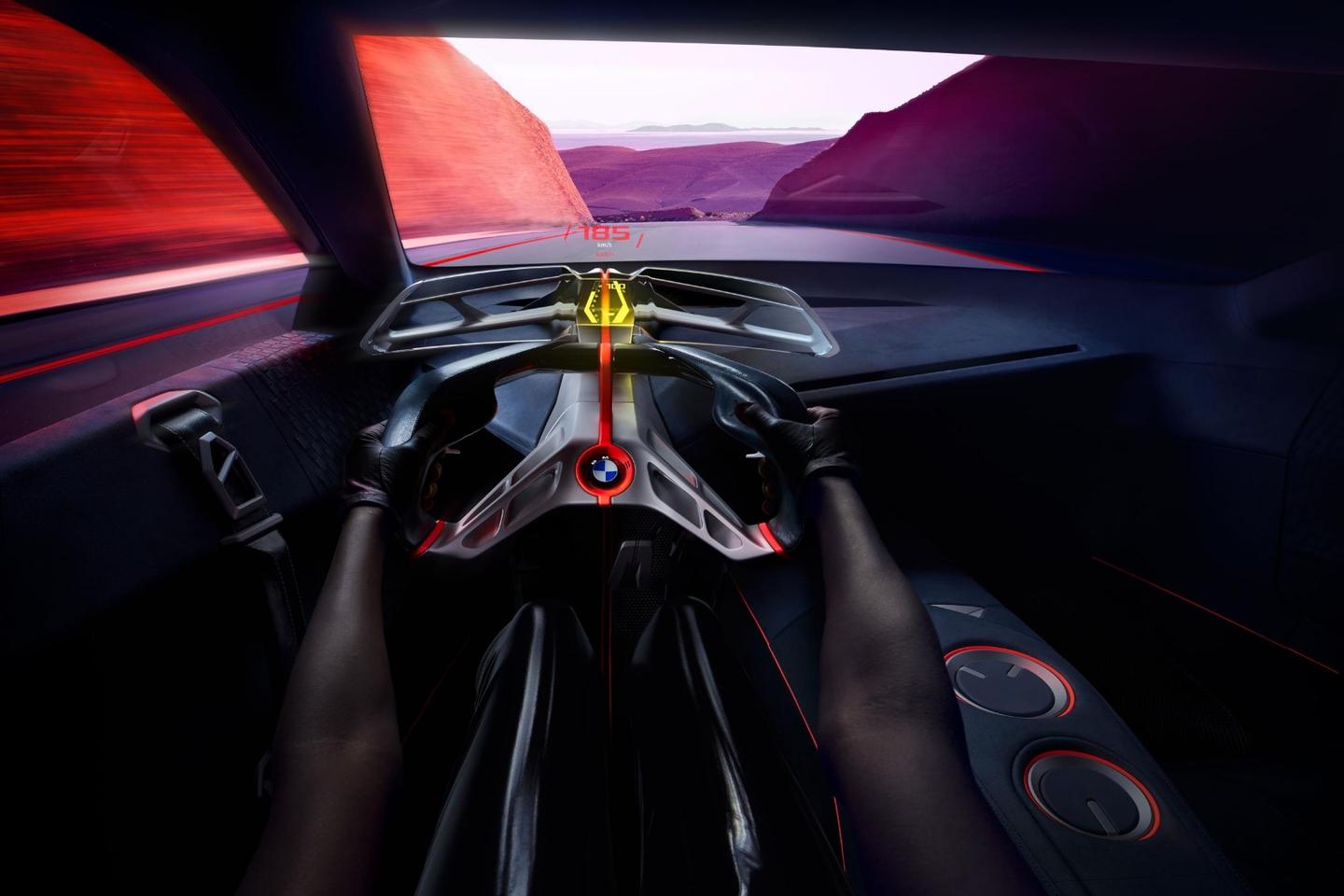
BMW
The actual information displayed within the Boost Pod continually adjusts to sharpen driver focus. As speed increases, the displays shift layout toward performance-based data and reposition information more in the driver’s eye line. The HMI also alerts the driver of the optimal timing for the push-button Boost+ mode, assisting in creating a hair-raising ride.
“Intelligent technologies help the driver and deliver the right content at the right time,” explains Domagoj Dukec, BMW design VP. “Operation is clear and intuitive, with all information presented in the driver’s direct field of view. This is a deliberate counterpoint to the BMW Vision iNEXT, which focused on multimodal operation from every seat.”
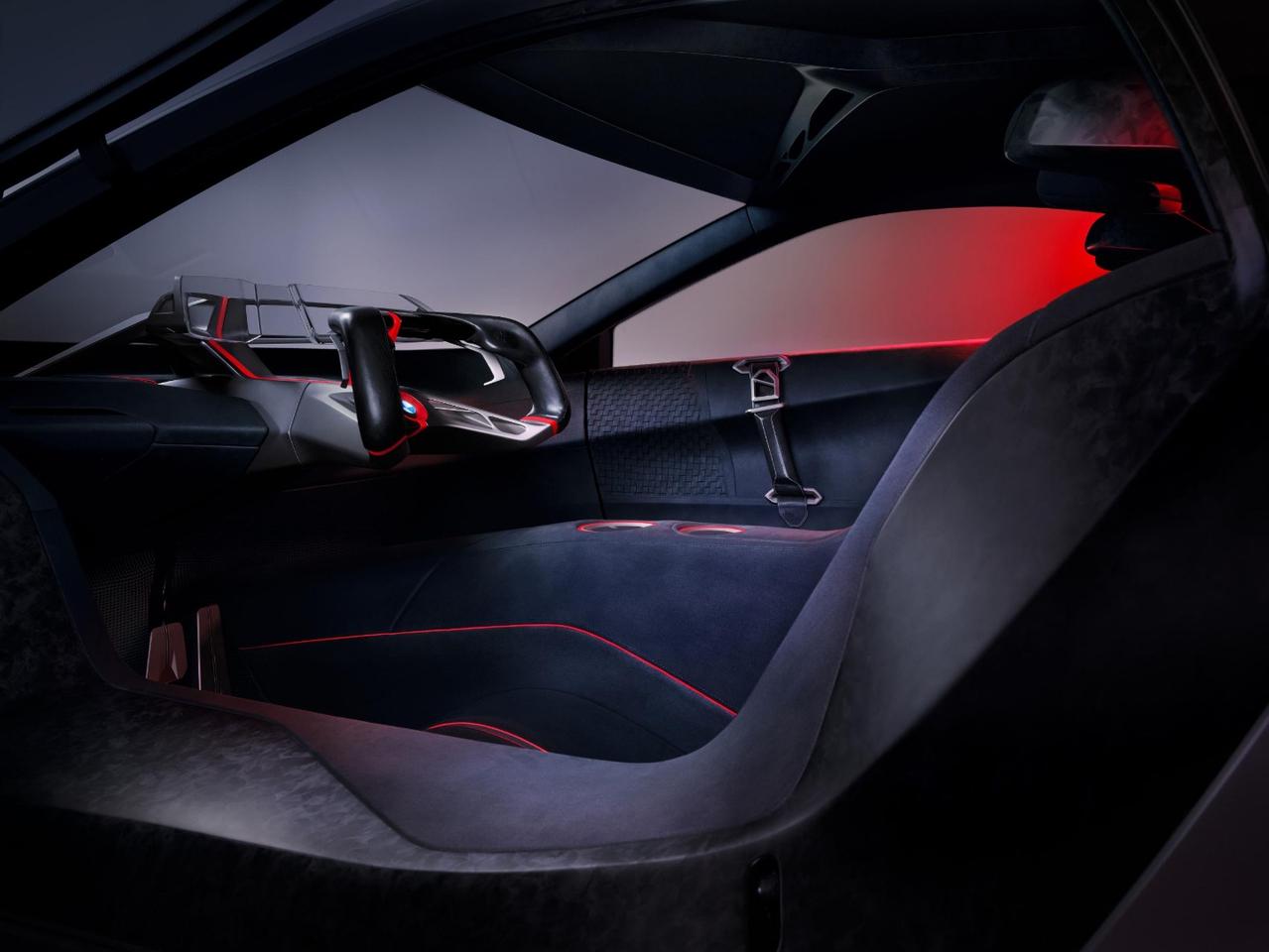
BMW
Interior materials further intensify the human-machine connection. Only surfaces touched by driver or passenger – the door handles and steering wheel – have the supple warmth of leather. The majority of the interior is covered in dark blue microfiber, and a mix of anodized titanium and painted surfaces enhance the aesthetic. A gyroscopic cupholder helps keep drinks from spilling during fast, spirited straight-lining and cornering.
The Vision M Next would stand out quite effortlessly in a world of shapeless autonomous bubbles and tiny electric city cars, conveying a sense of speed and power. Referencing contemporary and classic BMW sports cars, designers carefully massaged the car into a futuristic supercar wedge with race-derived attitude. The roofline is a lower, more dramatic version of the i8; the “thrilling orange” contrast blocks and vertically angled rear-end tie in to the 1972 Turbo concept; and the louvred rear windshield is a very clear reference to the M1 supercar. The combination of curvaceous hood and fenders and sharply cut character lines and creases demonstrates the cross-generational inspiration.
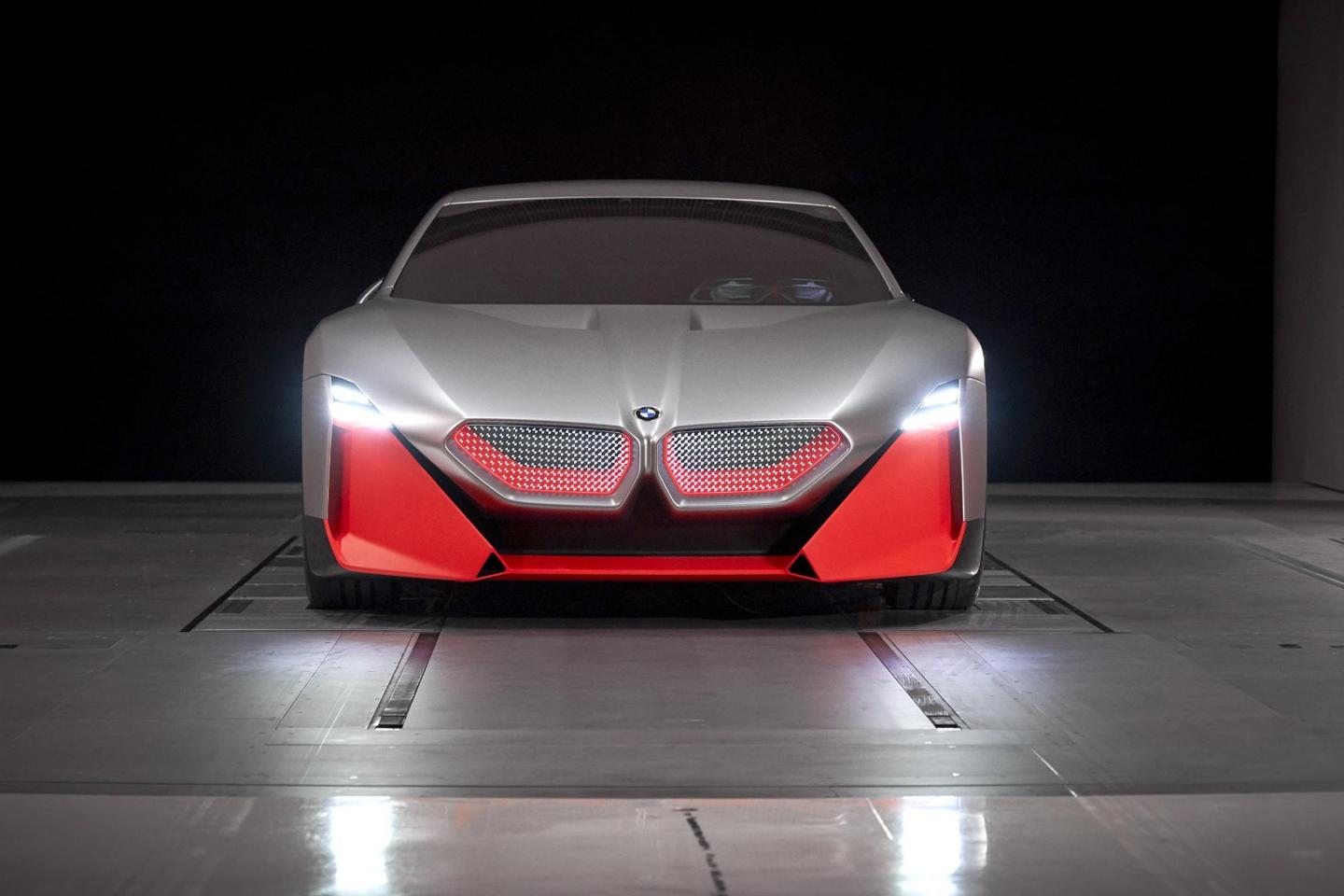
BMW
Designers had particular fun with the face, a futuristic iteration of timeless “BMW” design cues. The classic rounded kidney grille is angled off into a polygonal design, the top of which rises upward to split the hood, making it look as though the illuminated mesh-filled grille openings might just thrust the vehicle backward rather than swallow air as it moves forward. Way out at the edges, the headlights are arranged into a stacked interpretation of BMW’s famous four-eyed design, two thin bands of phosphorous-coated glass fiber standing one above the other on either side. BMW calls this next step of laser-sharp headlight design “Laser Wire” technology.
The aerodynamics of the Vision M Next’s low, smooth-rolling cabin get an assist from the sharply cut side intakes, blade-like front intakes, front spoiler, oversized recycled-carbon side skirts, and sturdy rear diffuser.
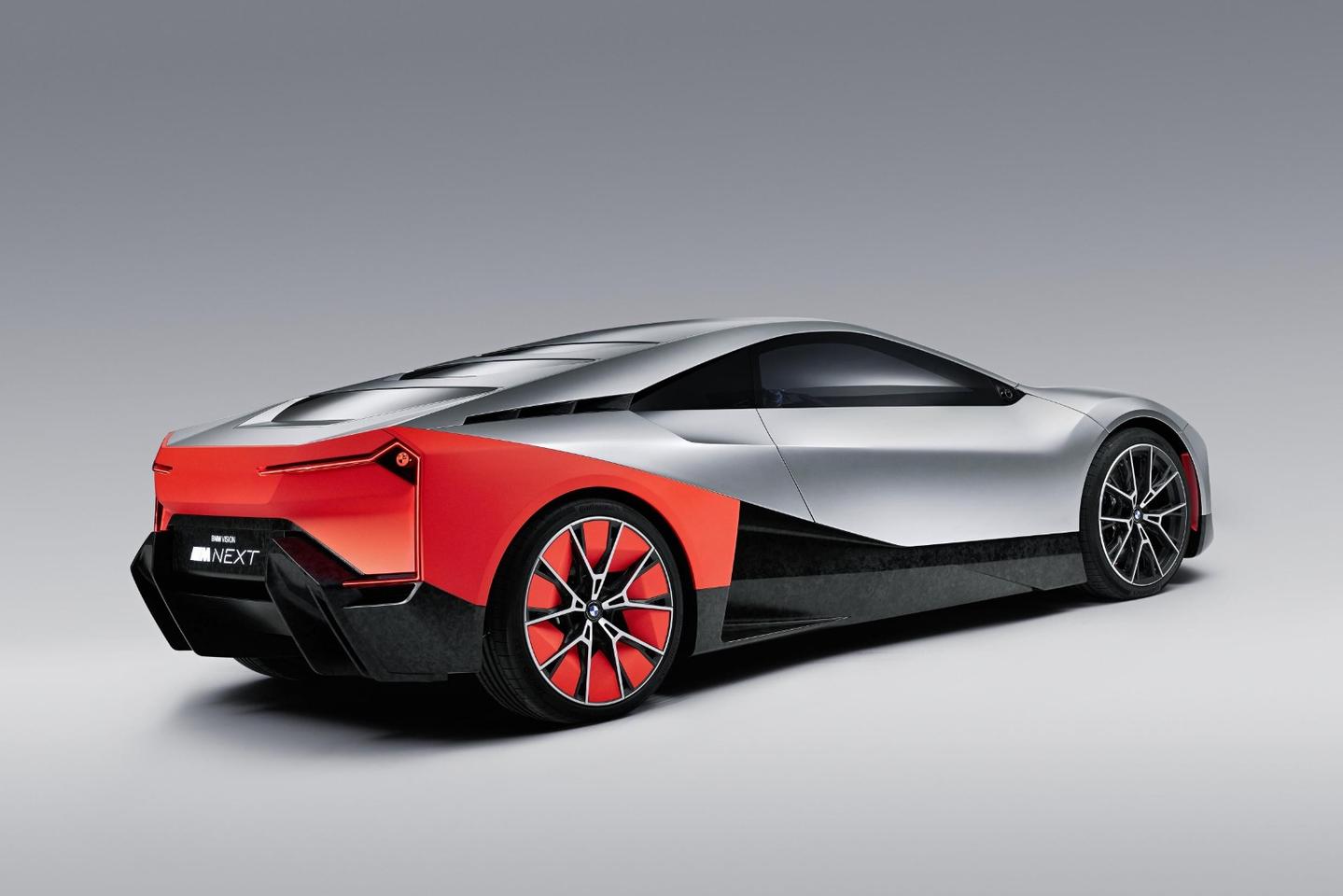
BMW
At the rear, a two-tone combination of orange and black recycled carbon fiber grabs the eye and refuses to let go until the car accelerates its way completely out of view. Barely-there wraparound rear lights benefit from the same Laser Wire tech as the headlights.
BMW held the world premiere of the Vision M Next at this week’s future-focused #NEXTGen event. The automaker didn’t confirm any plans to develop it into a production supercar and M1 spiritual successor, but it did outline accelerated plans to get 25 electrified vehicles to market by 2023 – so there might just be some room in the electric lineup.
Source: BMW
